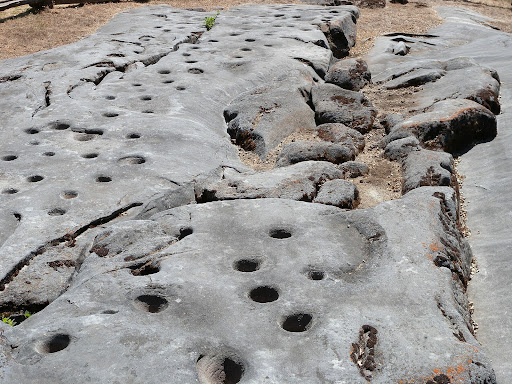Overview
California Indian Geographies: Reading Maps and Mapping Space

Author: Stephanie Lumsden, PhD (Hupa)
Lesson partner: Rebecca Lowry, Humboldt County Office of Education
Grades: 9-11
Suggested Amount of Time: 60 minutes
Curriculum Themes
- History
- Cultural Strengths
- Relationship to Place
Learning Goals
Students will be able to analyze the historical and cultural significance of mapping through videos and in-class discussions.
Students will be able to identify 3 important California Indian sites and give examples of how California Indians map historical and ongoing Indigenous presence.
Students will be able to produce a personal map of California that reflects their relationship to place using what they learned in the lesson.
Unit Overview
This lesson introduces students to the important concepts of Indigenous geographies and mapping in California. The lesson covers the historical and political context of mapping and uncovers its relationship to U.S. invasion and ongoing occupation of California Indian homelands. The lesson covers 4 key terms and analyzes 3 significant California Indian places in order to demonstrate mapping to students beyond a one dimensional understanding of what maps are. The lesson includes videos and a creative in-class activity where students will get the chance to draw their own map of California.
Teacher Background
For California Indians and all Native Americans, relationships to homelands are demonstrated through story, rock art, material daily practices, and ceremony. One way to study Indigenous peoples’ relationship to their homelands is through geography. Indigenous peoples have always mapped spaces of social and spiritual significance in ways that may seem surprising to those who only engage with contemporary road maps or gps. Indigenous peoples such as the Miwok, Modoc, and Yurok mapped their relationships with their homelands through grinding stones, petroglyphs and place names. Indigenous mapping of homelands did not rely on exclusionary borders; homelands constituted by relations with other nations and more-than-human beings. Mapping has long been a tool of conquest for imperial and colonial invasion which sought to displace/erase Indigenous relationships to homelands. For example, Sue-Meg was renamed “Patrick’s Point” by U.S. settlers as a way to erase Yurok presence and persistence on their homelands. Importantly, reconstituting California Indian homelands into the territorial sovereignty of the U.S. was accomplished in part by mapping. However, California Indian geographies and mapping practices have endured occupation. Sites such as Chaw’se, Lava Beds, and Sue-Meg demonstrate California Indian peoples embodied resistance and persisting Indigenous geographies. California Indian mapping practices mark Indigenous places and assert ongoing presence in spite of U.S. occupation.

